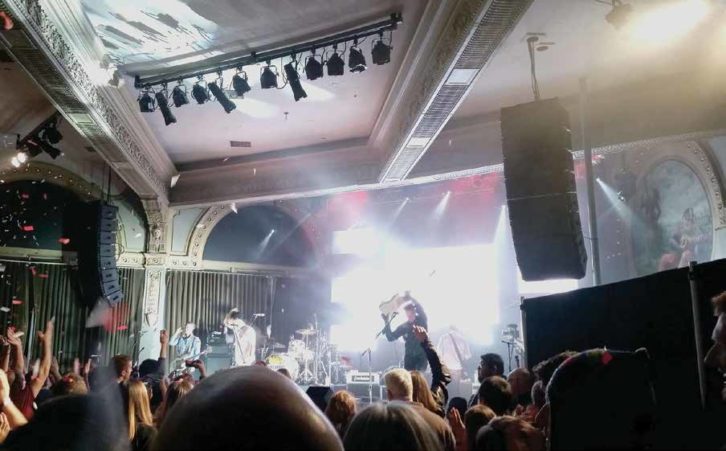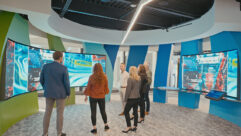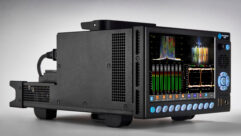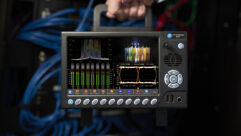

Designers started wanting touch interactive tables long before they were really practical. Yet like most things in AV, somebody managed to work it out, using projectors and possibly baling wire, and kids grew up man-handling touch tables at famous museums, without realizing how precarious the technology was beneath their fingers. That’s changing.
When the Smithsonian decided to upgrade their iconic touch table at the National Air & Space Museum in D.C., they were heavily motivated by the challenges of their existing (and ancient) projector-driven, optical system. Their once miraculous cutting edge system was low-res and hard to maintain, and full of parts that had to be sourced on eBay.
So says Jim Spadaccini, founder and principal at Ideum, a New Mexico-based company that has been creating technology-based interactive experiences throughout the world for 16 years. During that time, working with aquariums, science centers, history museums, art and cultural organizations as well as in public and corporate spaces, the design company has seen the technical options expand.
Ideum takes a unique approach in that it offers a range of products—tables and walls that are pre-designed in various interactive configurations. Alternatively the company can design entirely custom tables, as well as design software and content as needed. Spadaccini says all of their tables—whether part of their product line or customized—are built into specialized housings and designed to withstand the rigors of public life, both in terms of user enthusiasm, and maintenance.
The case of the Air & Space Museum was a bit unusual in that the client did not want to change the interactive table exhibit, but modernize and bulletproof it. The content itself was proven, popular, and in keeping with the era of its subject—the International Space Station. Groups of guests routinely crowded around the table to design, build, and launch their own ISS modules—some 6.7 million guests a year.
“We had a couple of different things we could improve for them,” Spadaccini says. “First the technology itself. We got them a rock-solid 4K display that was a real upgrade from a hardware and maintenance standpoint.” On the software side, curators had observed some usability issues in the interface over the years, so with that input Ideum was able to make the UI more modern, straightforward and easy to use.
As for the content itself, Spadaccini terms it more of a “digital restoration;” it involved upscaling certain elements with new, higher res graphics and illustrations, and higher res footage that could be added or swapped in for existing elements. This allowed them to improve resolution and quality, while retaining the style, primary concept, and content of the exhibit.

This was the most recent of Ideum’s Smithsonian tables—previous installations went into the Museum of the American Indian in D.C. and recently the Cooper Hewett, Smithsonian Design Museum in New York. Ideum’s technology partner was UK-based Zytronic Displays Ltd, manufacturers of award-winning touch sensors that are used globally in ATMs, digital signage, self-service kiosks, and gaming machines as well as by industrial and medical OEMs.
The company, which focused entirely on custom touch deployments, has patented and highly durable touch sensing technologies, which can be provided in custom designs of 85” and beyond. Zytonic manufacturers in Newcastle, England, and maintains sales offices in Taipei, Tokyo, Austin, Texas, and Atlanta, Georgia and has a worldwide network of reps and distributors. It also maintains relationships with integration and design companies such as Ideum.
Zytronic builds unique, durable, high-performance Projected Capacitive Technology (PCT and MPCT) touch sensors, which incorporate microfine wires (less than the diameter of a human hair). The layout and pattern of these touch wires is entirely customizable; as Zytronic’s Bob Spencer explains, this is a very different approach to manufacturing than the masking required when building an indium tin oxide (ITO) touch surface as is often used in more conventional products. The sensors can pair with any display (or no display) or a painted surface—nearly any application that a designer can conceive.
Zytronic also integrates a custom controller and firmware, which Ideum designer Spadaccini says is critical to delivering responsive, ultra low noise and reliable performance in applications that can scale to 85” and beyond and accommodate up to 40 simultaneous touches.
For the Air & Space Museum, Zytronic supplied an 84” diagonal touch sensor that Ideum integrated with 4K LG displays and an aluminum fabrication designed expressly for public spaces. The capacity for simultaneous touch is critical to the popularity of the ISS exhibit—up to six guests can share the table at once. Also crucial is enthusiasm-proof durability, which Ideum specializes in and which Zytronic supports. In particular the sensors can read through up to 20mm of non-conductive material (usually glass).

Zytronic was heavily involved in the design process, and was able to produce the single, bespoke design 84” touch sensor without any of the upcharges that can accompany custom work from other touchscreen manufacturers. The ZyBrid touch sensor was designed using 6mm-thick thermally toughened Anti-Glare etched glass, providing a combination of smooth ‘finger glide’ interactivity and impact resistance.
“The Smithsonian was looking for an update of this proven exhibit. We made some minor improvements to the interface and improved the software itself, but the biggest upgrade was to move the exhibit from a projection-based, optical touch table to a highly reliable, hardened and responsive touch table,” summarizes Spadaccini. “We effectively rebuilt the entire exhibit from the ground-up to withstand the rigors of nearly constant use at what is one of the busiest museums in United States.”
Ideum engineered an 84” touch table and chose to use Zytronic’s touch sensor because it could be built to Ideum’s exacting specifications, and was able to deliver the multi-touch capabilities required to support simultaneous use by up to six visitors. To support the new hardware configuration, Ideum also redesigned the software to include key interactive elements. Specifically, once users complete their space station modules, they are able to virtually launch their module, displaying the final product at the center of the table. Users can then email a rendering of the final product to friends or family.
This is the third recent touch-table deployed by Ideum in a Smithsonian museum. Similar tables are currently in use at the National Museum of the American Indian in Washington D.C. and the Cooper Hewitt Smithsonian Design Museum in New York City. In all cases, multi-touch interactivity enabled by Zytronic is being used to draw in visitors and provide an extremely reliable, low-maintenance solution to the museums. This tactile engagement gives visitors an important way to interact with the exhibits and uses technology to reinforce learning through hands-on participation.










